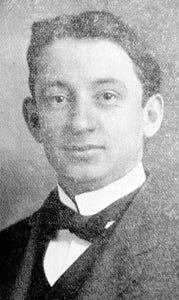The murder of Grac Jones: Chapter 10
Published 8:35 pm Wednesday, August 5, 2015
The trial: The prosecution
EDITOR’S NOTE: On the evening of Oct. 26, 1908, five shots rang out in the village of Holland. Tiberius Gracchus “Grac” Jones lay dying on the ground inside the gate leading to his home. “They have killed me and killed me for telling the truth,” he told a friend as his life ebbed away. This is the 10th in a series of articles about the Jones murder case. Suffolk historian Kermit Hobbs Jr. compiled the 18-part series from personal accounts, newspaper stories and court records he has studied from the period.
By Kermit Hobbs Jr.
Special to the News-Herald
The formal trial of Samuel Hardy before the Circuit Court of Nansemond County began Tuesday, Feb. 2, 1909, and would last four days. The charge against Hardy was first degree murder. A guilty verdict would send Hardy to the electric chair.
The presiding judge was James L. McLemore of Suffolk, regarded as able, honorable, and impartial by members of the opposing parties.
The prosecution of the case was conducted by Commonwealth’s Attorney James U. Burges, assisted by Col. George C. Cabell, city attorney of Norfolk, and Robert W. Withers of Suffolk. Col. Cabell was a close friend of Burgess Jones, brother of the victim, and he performed his services without payment.
The defense team consisted of attorney R.H. Rawls, a retired judge of Nansemond County, assisted by T.H. Wilcox of Norfolk, and Seth Everett of Suffolk. These were assisted by attorney J. Edward Cole of Norfolk, brother-in-law of Sam Hardy.
James E. Oliver, an eyewitness to the proceedings, recalled that “Suffolk was filled with horses, buggies, carts and surreys and not one [person] in four who were at the courthouse could get inside. The windows were open and people on scaffolding watched through the windows. Those who could see and hear relayed to those who couldn’t [hear] what was going on.” The majority believed that Hardy would be found innocent.
The sequence of witnesses was similar to those called at the inquest and the preliminary trial.
Several essential facts were established: Sam Hardy had threatened to kill Grac Jones; Hardy had put a .32 caliber pistol in his pocket as he left his store on the fateful evening; the forearm of an Ithaca shotgun was found at the site; Jones had been shot twice by a shotgun and three times by a pistol.
Several other topics of debate arose, few of which contributed to either side’s case.
There was an effort by the prosecution to prove Hardy had sold alcohol without a license and had threatened to kill anyone who got in his way. Quinton Peale, county Supervisor for the Holy Neck District, admitted that a year earlier he had cautioned Hardy against selling liquor illegally but would not testify that Hardy had ever done so.
The prosecution called P.S. Livermore, treasurer of Ithaca Gun Co., who testified that the shotgun numbered 140444 was sold to Leonard Hardware Co. of Petersburg. Further testimony proved this gun was part of a shipment made to Sam Hardy in October, 1907.
Attorney R.W. Withers testified that Grac Jones had been part of a lawsuit against Sam Hardy concerning the destruction of Zach Holland’s will. Jones was also seeking to have Hardy arrested for illegally selling whiskey. Jones had been to see Withers in his Suffolk office on the fatal day and had left his door at 7:15 pm.
The prosecution offered no absolute proof that Sam Hardy had pulled the trigger in the murder of Grac Jones. It had, however, offered an abundance of circumstantial evidence. It had alleged that Jones’ accusations against Hardy over a period of months — for lying about the destruction of the will and for selling illegal whiskey — had given Hardy a motive for killing Jones.
The facts that Hardy carried a .32 caliber pistol and was known to have a 12-gauge shotgun with a loose forearm, both of which were apparently used to commit the murder, were expected to prove to the jury beyond a reasonable doubt that Hardy also had the means to carry out the murder.
The prosecution rested its case.






